The Island Kitchen: Recipes from Mauritius and the Indian Ocean, written by Selina Periampillai, is filled with 80 recipes, beautiful photography, and stories highlighting the incredible cuisine of Mauritius and surrounding islands in the Indian Ocean. A few highlights include Bol Renversé (Sunny-Side-Up Egg, Chicken & Pak Choi Rice Bowl from Mauritius), Pork Loin Glazed with Honey & Lime from Rodrigues, Ginger & Herb Grilled Red Snapper from Seychelles, and Salady Voankazo (Tropical Fruit Salad with Vanilla Syrup) from Madagascar. I will also be sharing her recipe for Mkatra Foutra (Sesame Coconut Flatbreads) following the review.
Disclosure: I received a digital copy of this book from Bloomsbury Publishing in exchange for my honest review. All opinions and statements are my own.
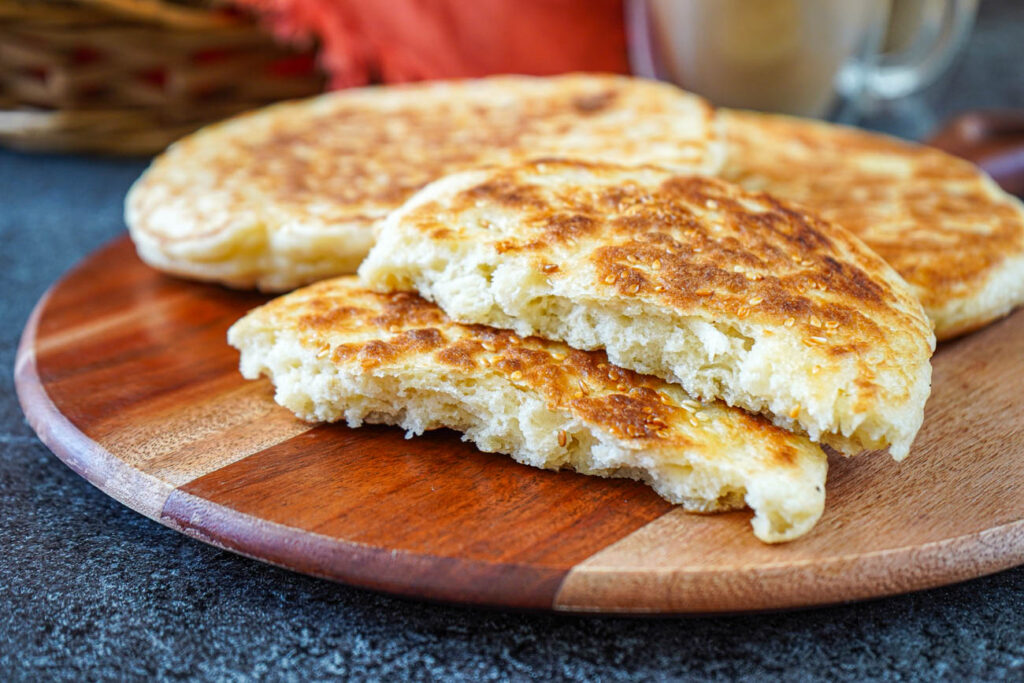
Selina Periampillai
Selina Periampillai is a London-based self taught chef “inspired by her Mauritian heritage and the moreish home cooking of her parents and family.”
She developed her brand Taste Mauritius in 2012, has hosted supper clubs, holds a variety of pop-up events, caters for corporate events, and teaches cooking classes.
Her work has also been featured in Air Mauritius, Jamie Oliver.Com, BBC Good Food magazine, and more. This is Selina’s first cookbook.
The Island Kitchen
Selina begins The Island Kitchen with an introduction and a few memories that have inspired her love for the islands of Mauritius, Madagascar, Réunion, Rodrigues, Seychelles, the Maldives, Comoros and Mayotte and their accompanying flavors. Many recipes in this book come from her family or are inspired by her travels.
For those unfamiliar with the cuisine, she has included a helpful guide to the Indian Ocean kitchen with descriptions and uses of notable vegetables, fruit, herbs & spices, and pulses & grains. You will also find an overview of each island with an illustrated map, history, and the shaping of its cuisine.
The chapters are divided according to the following: Meat, Fish and Seafood, Vegetables and Sides, Snacks and Street Food, Chutneys and Pickles, Desserts, and Drinks. Each chapter has a list of the included recipes and a short introduction.
The beautiful photography is provided by Yuki Sugiura with illustrations by Sarah Greeno. Most of the recipes are accompanied by a half to full-page photo of the finished dish. There are even a handful of step-by-step photos to demonstrate specific techniques such as cracking a coconut, cutting a pineapple, and folding samosas.
Titles are listed in English with Creole or the original language written underneath alongside the island origin. Each recipe has a headnote with background information, personal stories, serving size, prep, and cooking time. Measurements are written in Metric.
Mkatra Foutra (Sesame Coconut Flatbreads)
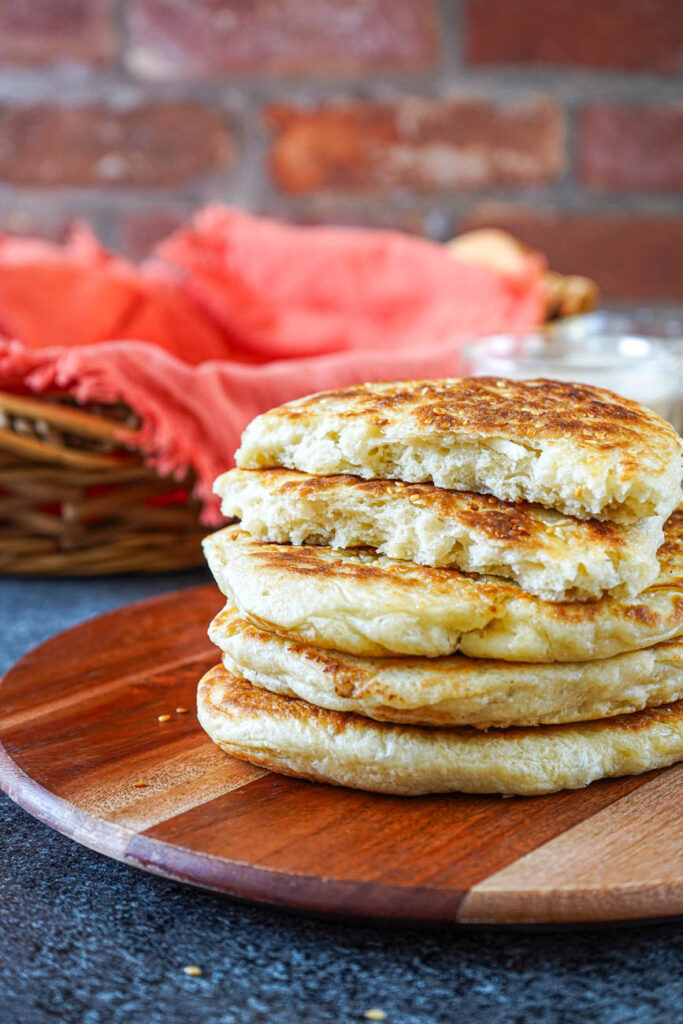
To pair with the review, I made Selina’s recipe for Mkatra Foutra (Sesame Coconut Flatbreads)! This bread from Comoros has a yeast and coconut milk base to create a soft and fluffy texture.
After bringing together the thick batter and resting at room temperature for an hour, dollops of the dough are topped with sesame seeds and heated in a hot, greased pan until golden on each side.
The result is a wonderfully fragrant, lightly golden bread perfect for pairing with a variety of meals. Selina recommends serving the Mkatra Foutra straight from the pan with a drizzle of honey and alongside coffee or with a Comorian curry.
They are definitely best from the pan, but leftovers can be stored in an airtight container for up to 1-2 days.
Forming the Mkatra Foutra
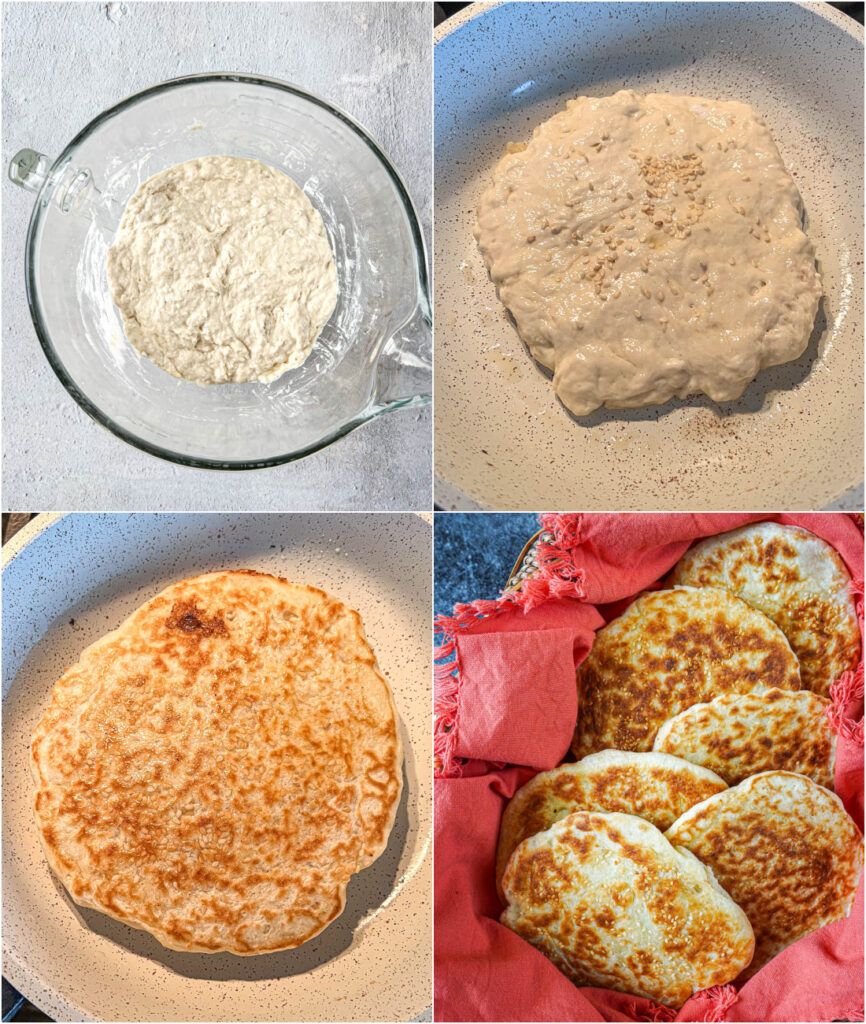
I have included the US customary measurements, but metric is recommended for more accurate results-especially when working with flour.
The dough should have a thick, batter-like consistency that can be dolloped into the pan. If too thick, stir in a little more coconut milk. If too thin to hold its shape, mix in a little more flour.
After adding the batter to the hot pan, use the back of a spoon to form it as close to a circular shape as possible. If the spoon sticks too much, grease it with a little butter or oil.
I often grease the pan and spoon with ghee.
Adjust the heat as needed between medium and medium low. The bread should develop a nice golden color, but still have enough time to cook through the center.
To keep the bread soft and fluffy, I wrapped them in a towel after removing from the pan. I have also seen some recipes brush the top with additional butter/ghee.
Other Dishes
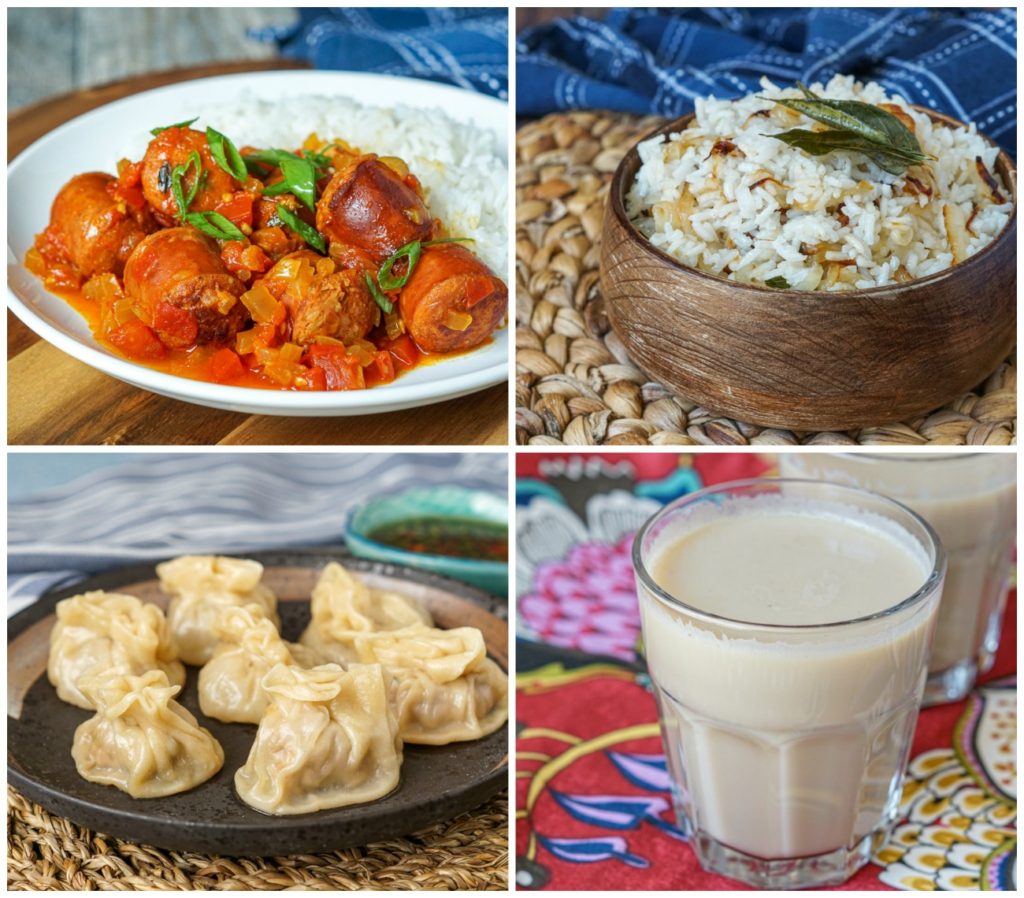
I also made Rougaille Saucisse (Sausages in Spicy Tomato Sauce), Vary Amin’ny Voanio (Malagasy Coconut Rice), Bouchons (Pork Dumplings with Soy Ginger Dip), and Cardamom Chai.
The Rougaille Saucisse from Réunion is definitely one of my favorites and it also doesn’t take too much prep. Pieces of smoked or herb sausages are simmered in a spiced tomato sauce with onion, thyme, chillies, garlic, ginger, turmeric, and paprika to create a perfect pairing with rice.
Vary Amin’ny Voanio is a coconut rice dish from in the coastal areas of Madagascar. Soaked basmati rice is simmered in coconut milk and cinnamon until tender, then mixed with crisp onions and curry leaves.
Bouchons (Pork Dumplings with Soy Ginger Dip) is another delicious recipe from Réunion. They were introduced to the island by Chinese immigrants from the Canton region. The pork-filled dumplings are flavored with spring onions, kaffir lime leaves, soy sauce, ginger, and chilli flakes, then steamed.
The incredibly fragrant Cardamom Chai (All Islands) pairs black tea with a combination of cinnamon, fennel, vanilla, whole milk, ands sugar. Selina states, “It’s also a tradition at my dad’s family home in Ecroignard on the east coast of Mauritius to welcome every guest with a cup of chai upon arrival, something that relaxes you instantly and makes you feel at home.”
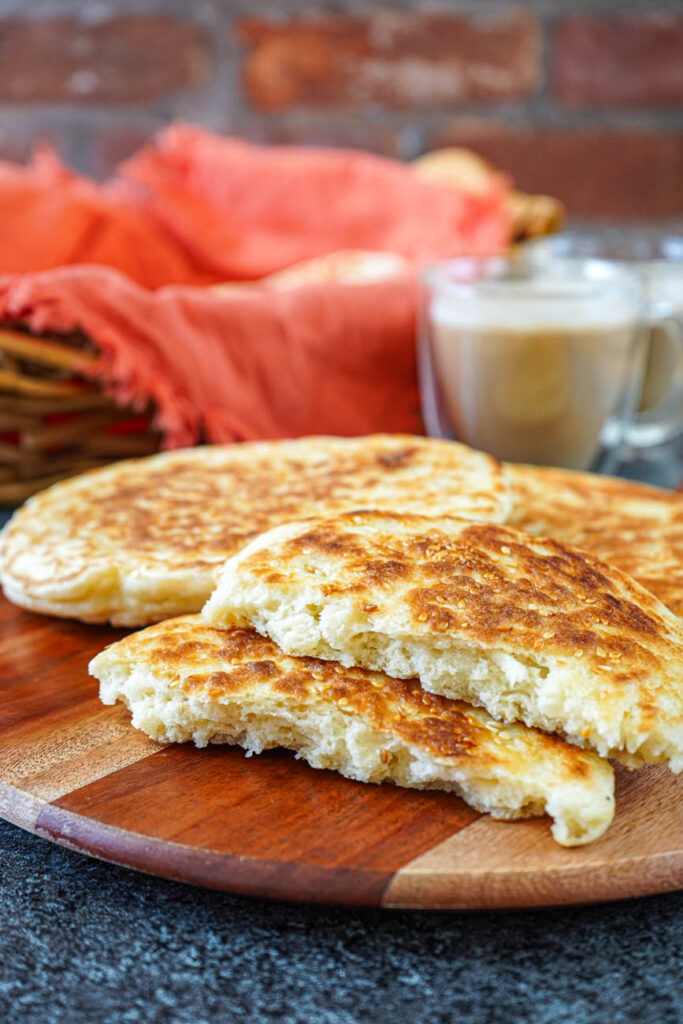
The Island Kitchen is a great pick for those interested in the cuisine of Mauritius and surrounding islands. There is such an incredible variety of recipes from snacks and vegetables to meat, seafood, desserts, and drinks. Selina has adapted them as needed for the British home kitchen. She even put together helpful menu plans for specific islands along with vegetarian, vegan, gluten-free, dairy-free, barbecue, picnic, and speedy weekday suppers ideas.
Many of the ingredients are available in larger American grocery stores, but a few will require further searching such as rosewater, Thai red chillies, nigella seeds, tamarind paste, curry leaves, breadfruit, saffron, cardamom pods, dark soy sauce, and fenugreek seeds. For those in the UK, Selina has included a list of online suppliers.
Mkatra Foutra (Sesame Coconut Flatbreads) Recipe
Excerpt from The Island Kitchen
Mkatra Foutra (Sesame Coconut Flatbreads)
Ingredients
- 1 sachet (7 grams, 2 1/4 teaspoons) fast-acting (instant) yeast
- 2 tablespoons (60 milliliters) lukewarm water 105-115˚F, 40-46˚C
- 400 grams (3 1/4 cups) plain (all-purpose) flour
- 1 teaspoon caster sugar
- 1/2 teaspoon sea salt
- 1 medium egg beaten
- 400 milliliters (1 2/3 cups) coconut milk
- 3 tablespoons (42 grams) butter or vegetable oil
- 2 tablespoons sesame seeds
- Honey to serve
Instructions
- In a large bowl, mix the yeast with 2 tablespoons warm water and leave to rest for 5 minutes.
- Add the flour, sugar, salt and beaten egg to the mixing bowl. Slowly pour in the coconut milk and mix well with a spatula until it is a batter-like consistency.
- Cover the bowl with cling film and leave to rest for 1 hour in a warm place.
- Once the bread mix is ready, set a medium frying pan or crêpe pan over a medium heat.
- Spread 1/2 teaspoon of the butter or oil on the base, using a piece of kitchen paper, to lubricate the pan.
- Once the butter has melted, scoop out 2–3 heaped tablespoons of the thick batter and plop onto the surface of the pan (it may be quite sticky). You should be able to get ten small flatbreads out of the mixture.
- Using the back of the tablespoon, make the batter into a circular shape. It doesn’t matter if they are not perfectly round.
- For each one of the breads, sprinkle 1/2 teaspoon sesame seeds on the top and press lightly.
- Cook for 3–4 minutes per side, until it has risen to about 1 centimeter (1/3 inch) high and is golden brown. Repeat with the remaining batter.
- Serve immediately, drizzled with honey or with a cup of coffee.
- These flatbreads keep for 1–2 days in an airtight container, but are best eaten fresh.

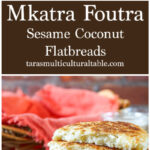
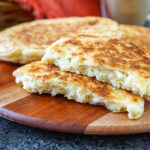
Patty at Spoonabilities
This flatbread looks so good. I love coconut in everything and can’t wait to try this!
Nart at Cooking with Nart
Love flatbread and this one looks so delicious!
Cathleen @ A Taste of Madness
Wow, this looks amazing!! I love a good flatbread, and yours looks amazing! Pinned for later, thank you for the recipe 🙂
Shadi Hasanzadenemati
Love the addition of coconut milk in this recipe, sounds delicious!
Anita
Wow, this bread is so delicious. I love the combination of coconut and sesame seeds.